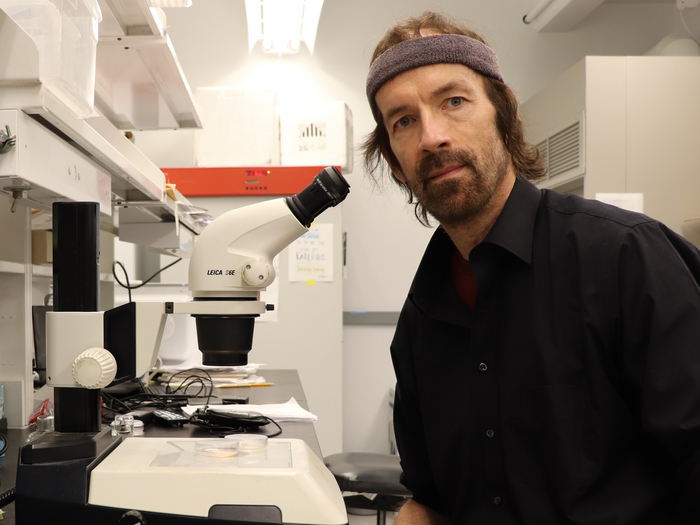Tailoring a person’s diet or medicine based on their genomes has been a goal of the medical community for decades, but the strategy has not been widely successful because people metabolize chemicals differently. A drug may work differently for two patients because they have different metabolism, which may be a result of genetic, environmental, or microbial differences.

Credit: Image credit: Boyce Thompson Institute.
Tailoring a person’s diet or medicine based on their genomes has been a goal of the medical community for decades, but the strategy has not been widely successful because people metabolize chemicals differently. A drug may work differently for two patients because they have different metabolism, which may be a result of genetic, environmental, or microbial differences.
Researchers in BTI Professor Frank Schroeder’s lab and colleagues have used a simple roundworm, Caenorhabditis elegans, as a tractable experimental model that can link differences in genomes to differences in metabolism. The work was published in Nature on July 6.
“Individuals have different metabolism, and that is important for how different diets, diseases and drugs affect us,” said Schroeder, a co-corresponding author of the paper. “You need to figure out how to tailor biomedical recommendations to different people based on their individual metabolism.”
Understanding a person’s metabolism based on their genome is very difficult because a human study can never truly be replicated to confirm or refute results, says Schroeder, who is also a professor in the Department of Chemistry and Chemical Biology at Cornell University.
“If you collect data from one person, you will never get the opportunity to sample another individual of the same genetic background, age, microbiome, and environmental exposure,” Schroeder said. “This makes it extremely difficult to unravel genetic traits that are responsible for different metabolism variants.”
The roundworm C. elegans is perfectly suited for the job because their metabolism is surprisingly similar to that of humans, and they are self-fertilizing hermaphrodites, which allows researchers to obtain thousands of worms that have identical genomes.
“Each strain of C. elegans can be thought of as an unique individual,” said Bennett Fox, a postdoctoral scientist in Schroeder’s lab and first author of the paper. “Another major advantage is the ease of genome editing in C. elegans, which allowed us to directly experiment with gene-edited strains and test our hypotheses in living animals.”
The researchers looked at four “individual” strains of worms: the standard lab strain, two wild strains from Hawaii and one wild strain from Taiwan. The animals were grown under standardized conditions at the same developmental stage.
“We performed untargeted analysis using high-resolution mass spectrometry and observed more than 20,000 unique metabolites, the majority of which remain unknown,” said Fox. “It was particularly exciting to find strain-specific metabolites, compounds that were strongly enriched or depleted in one strain relative to the other three strains.”
The researchers focused their efforts on a group of previously unidentified compounds that were elucidated as conjugates between 3-hydroxypropionate (3HP) and several amino acids (3HP-AAs). 3HP is toxic at high levels, and is typically metabolized by an enzyme called HPHD-1.
In one wild strain of C. elegans, the team found a mutation in the gene encoding HPHD-1 that resulted in an enzyme with reduced function. In response to the reduction-of-function mutation, this strain increased the production of 3HP-AAs, which the researchers hypothesize represents a detoxification mechanism.
“We have shown one way that genetic variants can manifest in differences in metabolism,” said Schroeder. “And now we can look for the similar or analogous variants in humans.”
“We show how to uncover the genetic basis of inter-individual variation of metabolism, and this could help the field of personalized medicine live up to its promise,” Schroeder added.
The Schroeder lab, which specializes in biochemistry and identification of unknown metabolites, worked together with the Walhout lab (systems biology, metabolism) at the University of Massachusetts Chan Medical School and the Andersen lab (natural variation, quantitative genetics) at Northwestern University. It was the unique synergy and complementary interests of the three labs together that resulted in this important step forward for modeling metabolism in different individuals.
Journal
Nature
DOI
10.1038/s41586-022-04951-3
Method of Research
Experimental study
Subject of Research
Not applicable
Article Title
C. elegans as a model for inter-individual variation in metabolism
Article Publication Date
6-Jul-2022
COI Statement
The authors declare no competing interests.




